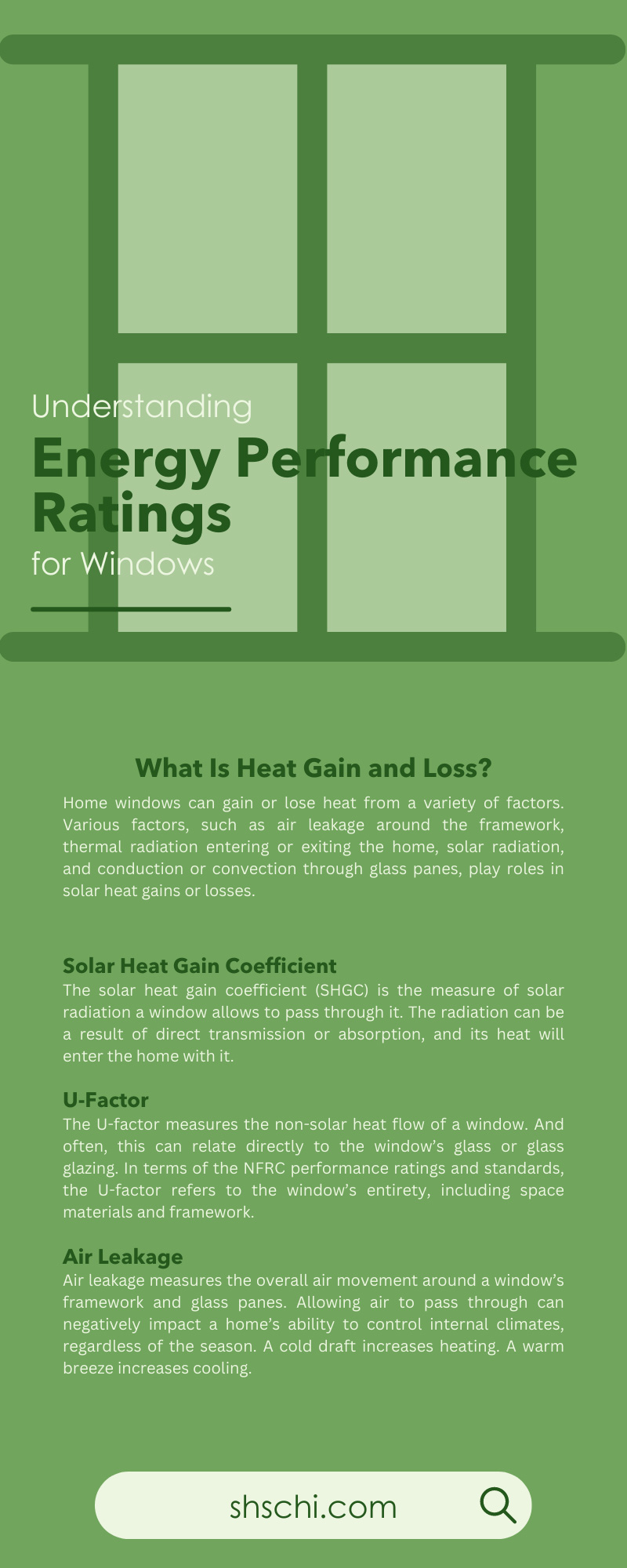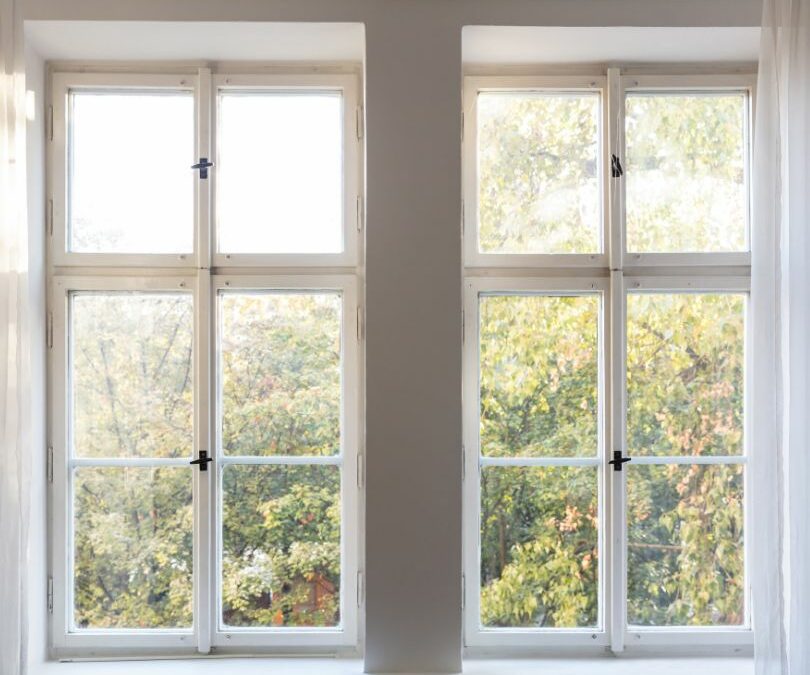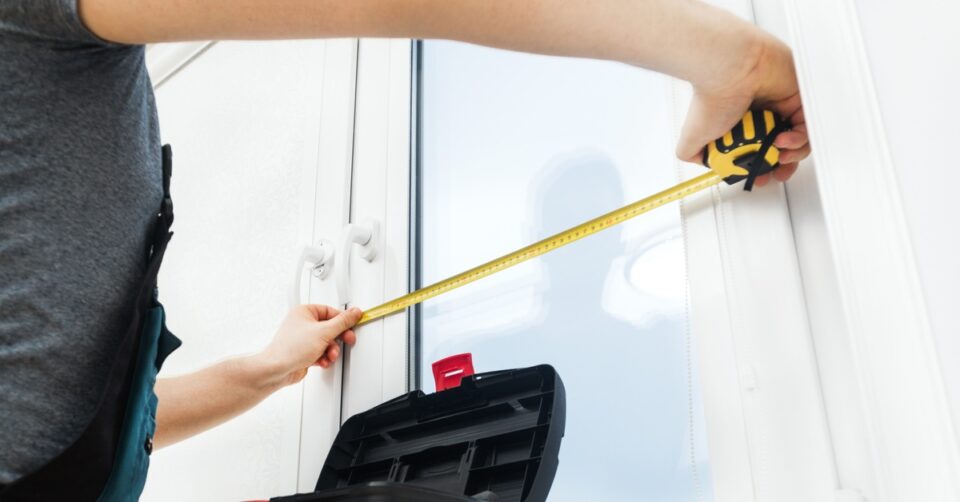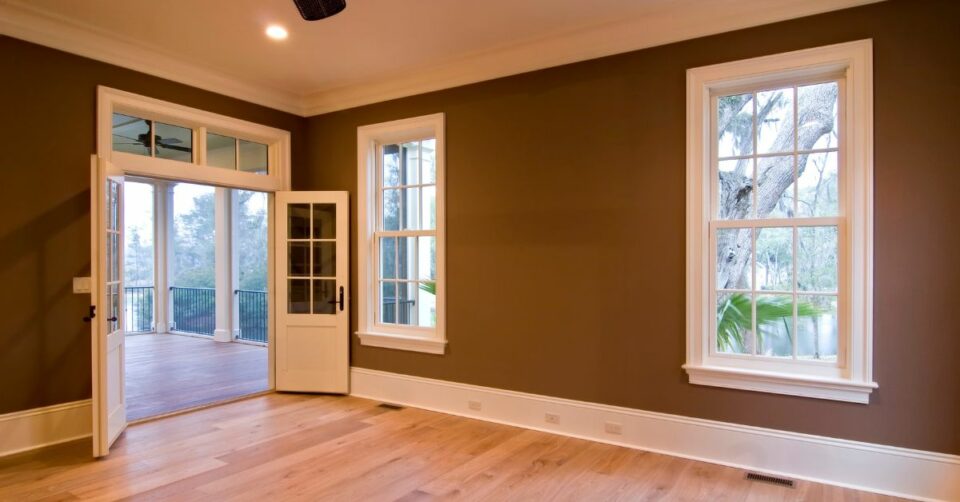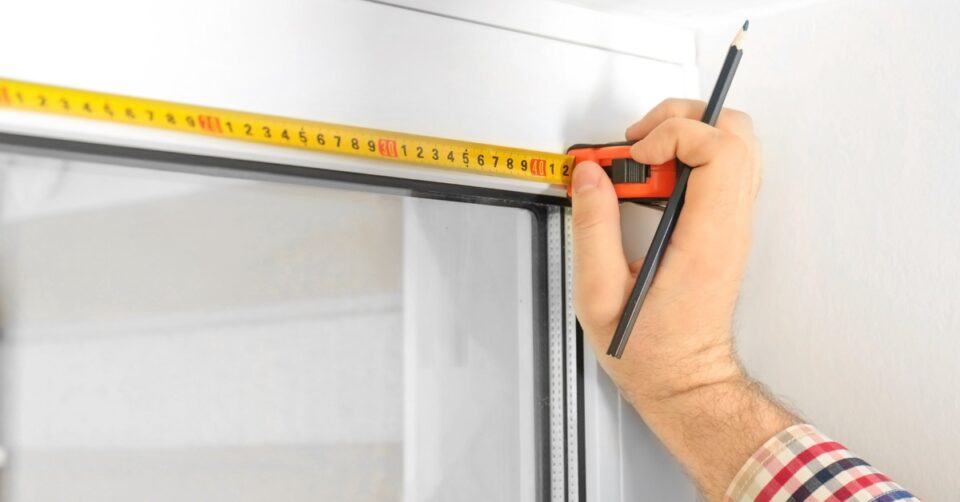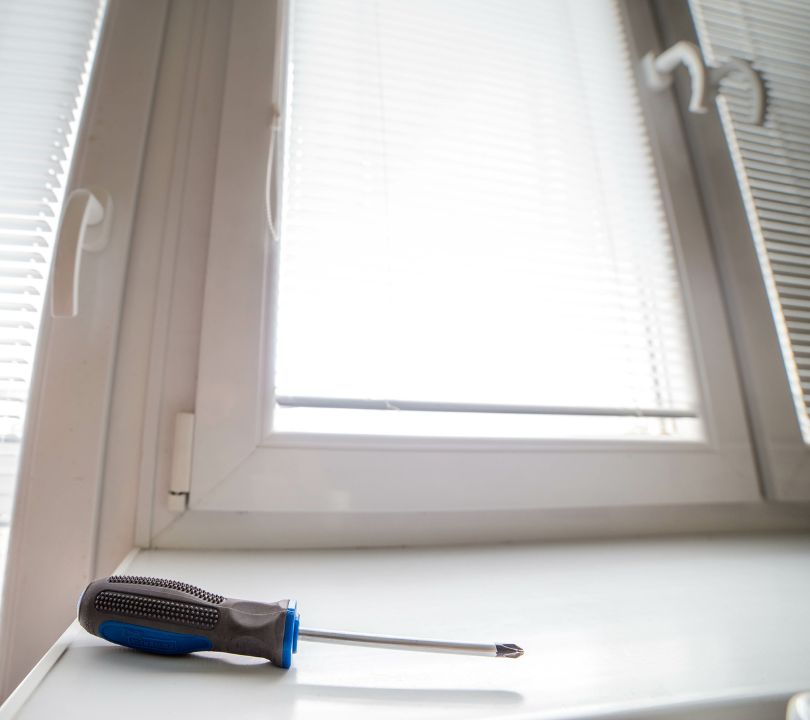
Questions To Ask Before You Hire a Window Installer
May 16, 2023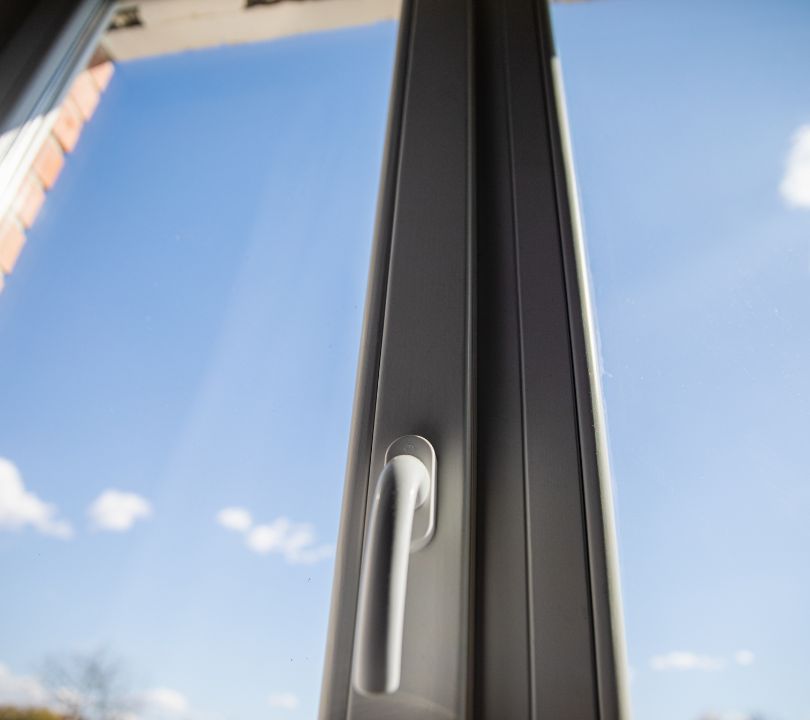
Single-Pane vs. Double-Pane Windows: What’s the Difference?
June 7, 2023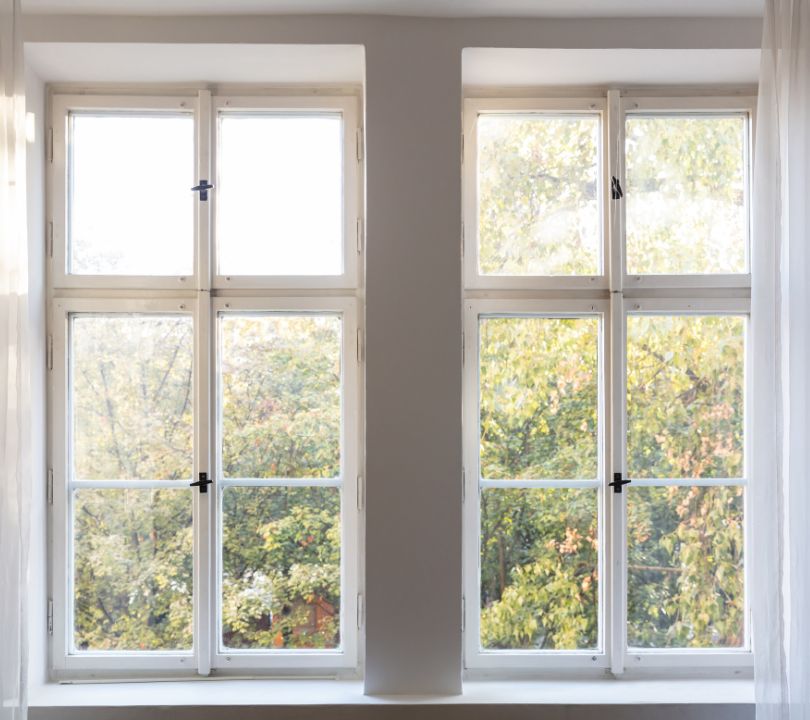
Getting the most out of your home’s permanent fixtures can do wonders with family finances and efficiency efforts. From windows to doors and appliances, many investments exist that improve the overall sustainability of a home. Understanding how each item performs regarding energy conservation can help homeowners. Energy-efficient features also help homeowners financially through tax breaks, reduced utility demands, and increased home values. Here, we help you explore and understand energy performance ratings for windows so that you can repair, replace, or invest to maximize the benefits.
A Closer Look at Energy-Rating Criteria
There’s a small series of criteria that objects must adhere to in order for the National Fenestration Rating Council to give them a stamp of approval. The NFRC is a volunteer program of trained and certified individuals who specialize in understanding energy performance demands. This program works by testing, certifying, and labeling the objects of interest. And this is what sets the precedence for applicable energy performances. Homeowners can use NFRC criteria to take advantage of the annual energy tax credits since they relate to their home investments.
The label on fixtures helps homeowners, contractors, and service providers determine the specific energy performance of the item and lends a hand in supporting product comparisons. While some homeowners may invest in items without the approved label, you should note that the long-term cost-effectiveness is far greater with the label.
The NFRC label differs from the Energy Star label, and both can be present on an item of interest. The NFRC label helps buyers learn and understand the item’s specific energy performance ratings and how they may serve the home best. In contrast, the Energy Star label only signifies that an item is energy efficient. Knowing the difference between the two can impact how homeowners invest and repair or replace home fixtures.
What Is Heat Gain and Loss?
For residential windows to meet the passable criteria and receive both labels, the NFRC must review a wide range of rating standards. We’ll help you understand these energy performance ratings for your windows here and explain each in detail below. The primary objective is to repair or replace your home’s fixtures as an informed buyer with long-term financial goals, home values, and familial welfare in mind.
Home windows can gain or lose heat from a variety of factors. Various factors, such as air leakage around the framework, thermal radiation entering or exiting the home, solar radiation, and conduction or convection through glass panes, play roles in solar heat gains or losses. Measuring these factors through the solar heat gain coefficient, U-factor, air leakage test, and condensation resistance test can help. We’ll describe these below.
Solar Heat Gain Coefficient
The solar heat gain coefficient (SHGC) is the measure of solar radiation a window allows to pass through it. The radiation can be a result of direct transmission or absorption, and its heat will enter the home with it. When the SHGC is low, this is a good thing because it means there’s less radiation coming into the house and more shade. The home’s climate control can operate based on real demands rather than compensating. When the SHGC is high, this can be great for the winter but bad for the summer. It means there’s a higher collection of solar heat inside the home. So how do you pick between low or high? Consider the home’s resting orientation, and let the professionals advise you. External shading factors can help determine the best SHGC in addition to overall climate patterns.
U-Factor
The U-factor measures the non-solar heat flow of a window. And often, this can relate directly to the window’s glass or glass glazing. In terms of the NFRC performance ratings and standards, the U-factor refers to the window’s entirety, including space materials and framework. It’s ideal to have a low U-factor, as the opposite can result in inadequate insulation and less overall energy efficiency.
Air Leakage
Air leakage measures the overall air movement around a window’s framework and glass panes. Allowing air to pass through can negatively impact a home’s ability to control internal climates, regardless of the season. A cold draft increases heating. A warm breeze increases cooling. A poor air leakage rating means the insulation doesn’t pass the energy performance necessary to label the window. And it’s essential to note that the installation process is a factor that affects the ratings. This is because a proper and precise installation is necessary to help reduce air leakage issues.
Condensation Resistance
Condensation resistance measures the window’s ability to deter moisture buildup. Commonly, outdated home windows will have a higher rating due to their age. Condensation resistance is measured from 0 to 100, and the lower the rating, the better the window’s ability to resist moisture buildup.
Light-to-Solar Gains
Light-to-solar gains provide a ratio between the visible transmittance and solar heat gain coefficient. This measurement determines the glass and glass glazing’s daylight transmittance while also accounting for its effectiveness at blocking solar heat gains. When the light-to-solar gains rating is high, that means a lot of light passes through without adding internal heat values. It’s worth noting that manufacturers don’t always provide the LSG rating on windows.
Visible Transmittance
Visible transmittance is another critical factor that helps determine the overall light that passes through windows. This is important because the higher the VT rating, the more visible light enters the home. A window’s glass and glass glazing directly impact the VT and the exterior daylight demands. Homeowners often reduce VT with shades or curtains, but it’s essential to note that these efforts can’t ward off the consequences of a high visible transmittance rating.
At Scientific Home Services, we specialize in high-quality craftsmanship with all window repairs and replacements. We have been providing aluminum window repairs and much more to the greater Chicagoland area for almost a century and have a long-standing reputation for excellence. We treat every family like our own. So you can rest assured knowing we’ll help you understand your window’s current energy performance ratings and walk you through all repairs or replacements to determine the best energy solutions. Schedule an appointment today!
